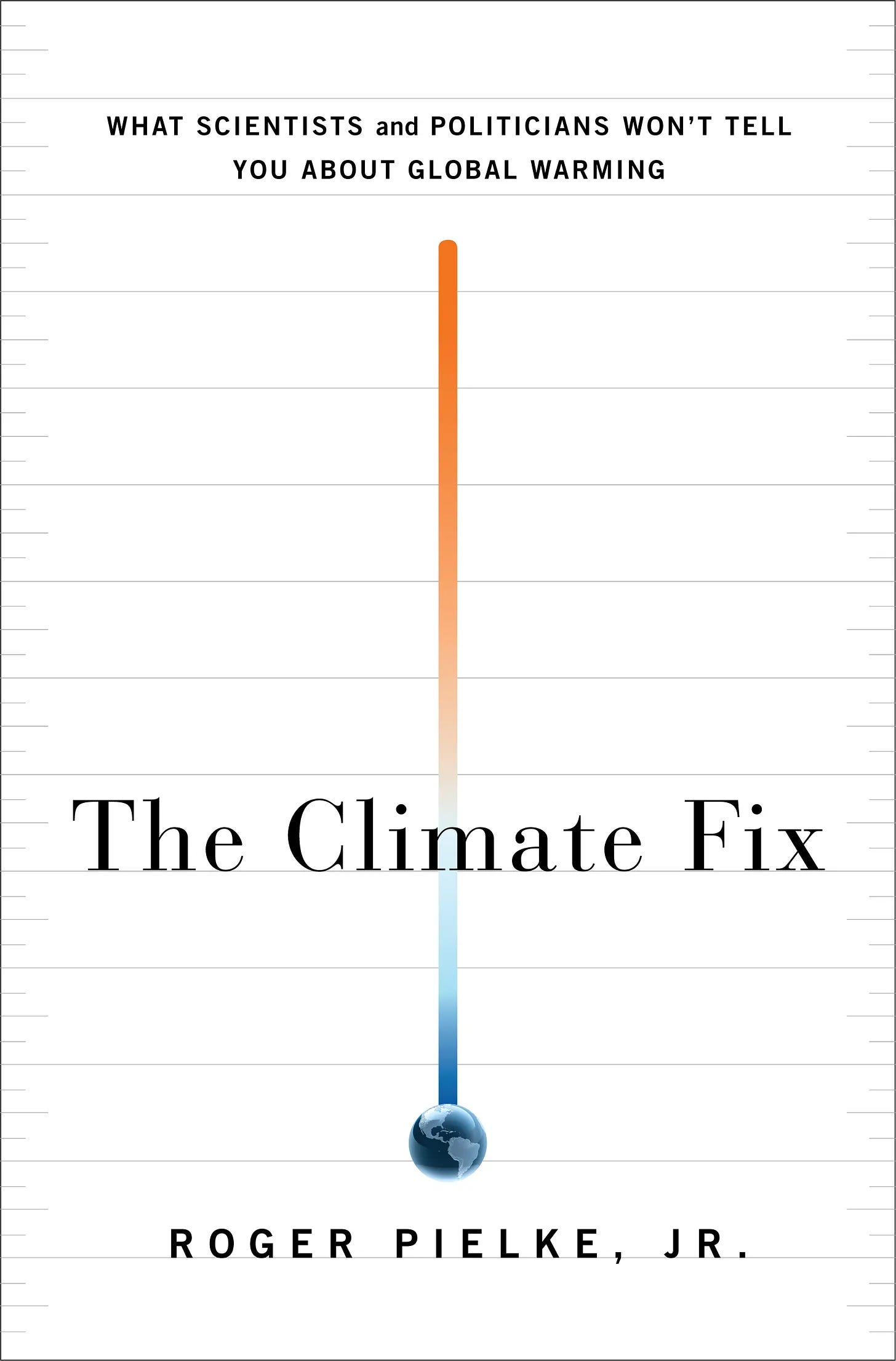Chapter 4 my book, The Climate Fix picks up where Chapter 3 left off, and conducts a deep dive into decarbonization arithmetic.
Here are links to the Chapters shared so far:
Chapter 1 — Dinner Table Climate Science
Chapter 2 — What We Know for Sure, But Just Ain’t So
Chapter 3 — Decarbonization of the Global Economy
Here is how Chapter 3 ends, and a full PDF of Chapter 4 is linked after the break:
[A] rapid increase in the average rate of decarbonization would be necessary to achieve a reduction in emissions of 50 percent below 1990 values. An important result from this type of analysis is that the conclusions are qualitatively very much the same for other possible emissions-reduction targets or different assumptions about economic growth. The bottom line is that to stabilize concentrations of carbon dioxide in the atmosphere at low levels will require advances in decarbonization of the global economy beyond that observed over the past decades and even the past century. The average annual rate of decarbonization implied by a 50 percent reduction in emissions below 1990 levels by 2050 for a 3.0 percent annual GDP growth is 4.4 percent per year, whereas the world actually experienced a 1.5 percent rate of decarbonization from 1980 to 2006 while achieving a 3.5 percent average rate of GDP growth.
Is decarbonization to below 0.20 or 0.10 tonnes of carbon dioxide per $1,000 of GDP by 2050 a lot or a little? What does it mean practically? We can better assess what it really means to decarbonize to a particular level by looking at the actual decarbonization experience of countries around the world, and so this is where we go next. Chapter 4 will conclude with a far more intuitive, and sobering, answer to these questions.
The decarbonization analysis of Chapter 4 remains remarkably current, illustrating the usefulness of doing the simple math of decarbonization. I did get one thing wrong however, which also linked below.




